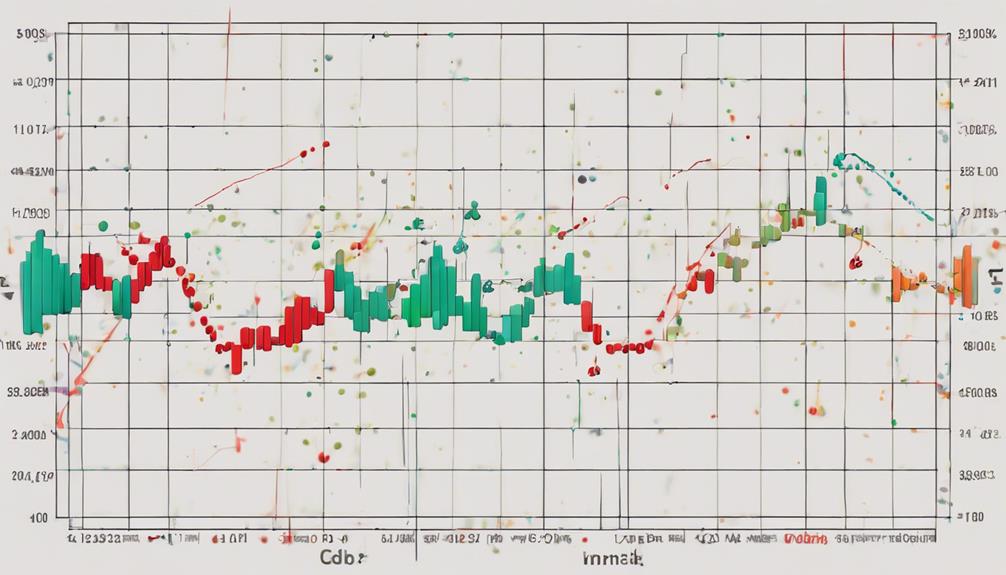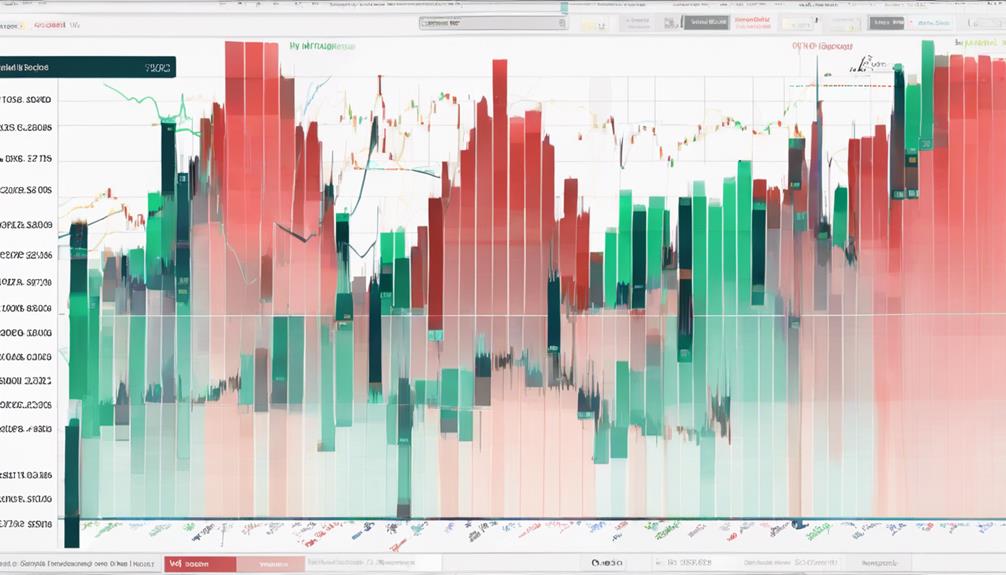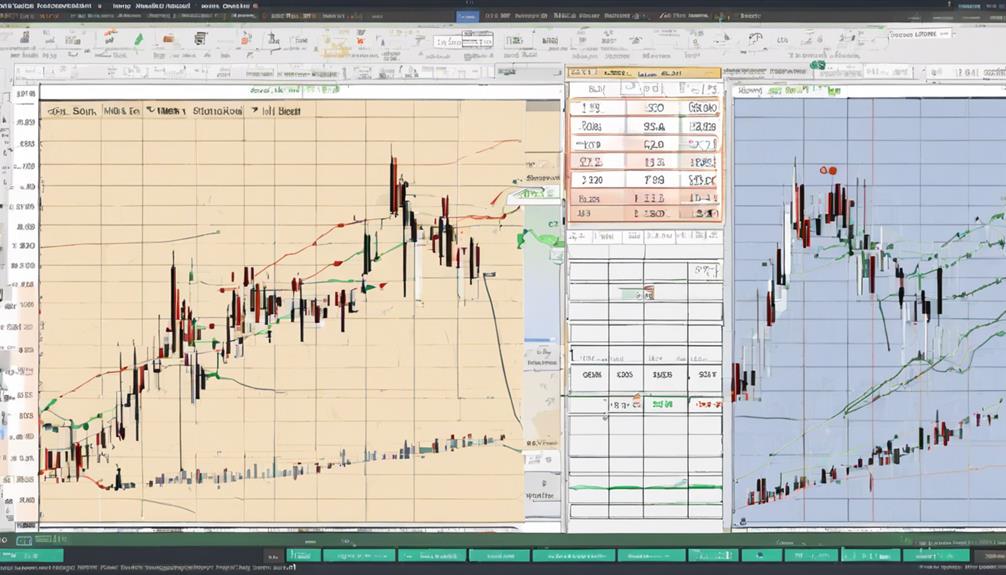The implementation of the Standard Deviation strategy in technical trading offers traders a systematic approach to analyzing market dynamics and managing risk effectively. By incorporating statistical measures to gauge volatility and price movements, traders gain a deeper insight into market behavior and potential opportunities.
This strategy acts as a valuable tool for decision-making, enabling traders to refine their entry and exit points and optimize their risk management strategies. As traders navigate the complexities of financial markets, the Standard Deviation strategy stands out as a method that can enhance trading performance and inform more precise trading decisions.
Understanding Standard Deviation in Trading
The comprehension of standard deviation in trading is paramount for evaluating price volatility and market sentiment accurately. Standard deviation serves as a crucial indicator in measuring the dispersion of prices from the average in trading activities. This statistical metric provides insight into market behavior by indicating the level of price volatility present. High standard deviation values suggest increased price volatility, while low values indicate a more stable market with lower price fluctuations.
In trading, standard deviation plays a significant role in formulating strategies based on market conditions. Traders can utilize this metric to assess the level of risk associated with a particular asset or market. Understanding standard deviation allows traders to gauge the potential price movements and adjust their trading strategies accordingly. By calculating standard deviation, traders can make informed decisions based on the expected price range and possible outcomes in the market. Overall, standard deviation is a valuable tool for traders seeking to navigate market fluctuations and make data-driven trading decisions.
Calculating Standard Deviation for Analysis

Utilizing a systematic approach to determine standard deviation is essential for conducting thorough analysis in trading strategies. Standard deviation is calculated by first finding the mean average closing price of an asset over a specific period. Subsequently, deviations for each period are computed by subtracting the mean from the individual closing prices. These deviations are then squared, summed across all periods, and divided by the total number of periods to obtain the variance. The square root of the variance gives the standard deviation, a measure of volatility that helps in assessing historical price movements and market momentum.
The standard deviation quantifies price dispersion from the mean average, offering valuable insights into market behavior and potential price movements. By incorporating standard deviation in technical analysis, traders can establish realistic price targets, implement effective risk management strategies such as setting stop-loss orders, and evaluate market sentiment to make informed trading decisions. Its role in analyzing asset volatility is crucial for developing sound trading strategies and enhancing overall performance.
Implementing Standard Deviation in Strategies

Implementing Standard Deviation in trading strategies enhances risk management and price analysis capabilities, providing traders with valuable insights into market dynamics and potential price movements. Standard deviation plays a crucial role in setting realistic price targets and establishing trading bands such as Bollinger Bands.
By utilizing standard deviation, traders can assess potential price movements, identify market bottoms, and determine optimal market entry points. This volatility indicator is essential for evaluating market momentum and making well-informed trading decisions.
Moreover, standard deviation facilitates effective risk management by calculating risk versus return ratios and assisting in setting appropriate stop-loss and take-profit orders. Incorporating standard deviation into trading strategies not only helps in measuring volatility and diversification but also improves the overall precision and effectiveness of trading indicators.
Traders who leverage standard deviation in their strategies are better equipped to navigate market fluctuations and capitalize on profitable trading opportunities.
Utilizing Standard Deviation for Risk Management

Utilizing standard deviation as a pivotal tool in risk management strategy elevates traders' ability to accurately gauge and mitigate market volatility. Standard deviation measures the dispersion of prices around the mean, providing insights into the high and low points of asset volatility. By incorporating standard deviation into risk management practices, traders can adjust their position sizing based on the level of volatility exhibited by an asset. This adjustment ensures that risk is managed effectively, aligning position sizes with the degree of price fluctuation.
Moreover, standard deviation acts as a key indicator for traders to assess and control risk exposure. By setting stop-loss orders and determining optimal profit targets based on standard deviation calculations, traders can tailor their strategies to minimize potential risks. Understanding how standard deviation influences risk in trading strategies is crucial for making informed decisions and enhancing overall risk-adjusted returns. Therefore, integrating standard deviation into risk management practices is essential for traders aiming to navigate market volatility with precision and confidence.
Enhancing Trading With Standard Deviation

The application of standard deviation in technical trading significantly enhances the evaluation of market volatility and potential price movements. By analyzing the standard deviation indicator, traders can gauge the level of price variability from the average price over a specific time frame. A low standard deviation reading implies that the current price movement is relatively stable, indicating a potential entry point. Conversely, a high standard deviation reading suggests increased price volatility, signaling potential risks or opportunities in the market.
When the standard deviation is calculated, it measures the square root of the variance, providing a statistical measure of price dispersion. Traders can use this information to adjust their trading strategies accordingly. For instance, a trader may consider adjusting their position size based on the asset's standard deviation to optimize risk management. Additionally, integrating standard deviation analysis with other technical indicators like moving averages can further enhance trading decisions by providing a more comprehensive view of market dynamics. This strategic combination can help traders make informed decisions and improve their overall trading performance.
How Can Standard Deviation Strategy Be Utilized in Technical Trading?
When it comes to grasping standard deviation trading in technical trading, it can be utilized as a risk management tool. By analyzing the standard deviation of price movements, traders can better understand the volatility of a given security and make more informed decisions about entry and exit points.
Frequently Asked Questions
How Do You Use Standard Deviation in Technical Analysis?
Standard deviation is employed in technical analysis to gauge price volatility, identify potential trend shifts, assess market sentiment, and manage risk. By analyzing deviations from the mean price, traders determine entry/exit points, adjust positions, and set price targets.
What Is the ICT Standard Deviation Strategy?
The ICT Standard Deviation Strategy, popularized by Inner Circle Trader, focuses on utilizing standard deviation as a key indicator in trading. This approach aims to identify market reversals and trends through precise analysis of price volatility.
What Is the Standard Deviation of a Trade?
The standard deviation of a trade measures the variability of trade returns around the average return, providing insight into risk and volatility. Traders use this statistic to evaluate consistency, predictability, and potential price fluctuations.
What Are Technical Trading Strategies?
Technical trading strategies are methods that use historical price charts and market data to predict future price movements. They involve analyzing patterns, trends, and indicators to make informed trading decisions based on price action and market psychology.
Conclusion
In conclusion, the implementation of the Standard Deviation strategy in technical trading is essential for assessing market volatility, managing risk, and making informed trading decisions.
By utilizing statistical measures to understand asset variability and historical price movements, traders can effectively navigate the market and optimize their trading strategies.
Enhancing trading with Standard Deviation is like sharpening a sword, ensuring precision and effectiveness in the ever-changing landscape of financial markets.
